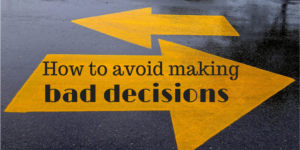It’s simple—waiting is an arduous task. Whether you have one-day delivery, same-day streaming, or want to get something digitally downloaded instantly, we live in a world that screams, “Why wait?” To be honest, getting whatever you wish for at any given moment does sound pleasurable. But stepping back, have you ever observed your bank balance and wondered, “Where did all my money go?” That deterioration in balance is possible due to the instant gratification trap.
The random purchases in discussions do not include big-ticket items. Instead, we as humans tend to focus on those little purchases like coffee worth $7, shopping on the internet after dark, or on unused apps that require subscriptions that are bound to make us go broke. When talking about the short run, these instant pleasures, on the other hand, have considerable long-term payoffs. If you’re constantly fatigued and trying to fill in the gaps in your financial struggles but are continuously hitting a dead end, this article will help you. Getting your money drained without you being mindful of it isn’t ideal, and this article helps you figure out the endless possibilities while providing solutions.
What is Instant Gratification?
Instant gratification refers to the desire to obtain pleasure or fulfill a wish instantly, without any delay. In simpler terms, it means the urge to do something presently rather than at a future time, regardless of whether waiting would be beneficial to us emotionally or financially. This phenomenon stems from a lack of self-restraint. Different forms of instant gratification are perfectly acceptable during one’s lifetime; however, it would evolve into an issue if it threatens your long-term objectives. Imagine it is like junk food that you consume for your bank account; bad for your financial health in the long run, but, in the moment, providing you with satisfaction.
Reason Why It Feels Great (And Why That’s the Problem):
Instant gratification utilizes the reward center of the human brain. Each time you reward yourself for completing a task, your brain releases a reward neurotransmitter, dopamine. It works as a temporary happiness booster. The downside? Our brains slowly start to desire that reward more and more, leading to a spending spree purely to feel that momentary pleasure. Surprisingly, this leads to humans constantly chasing that feeling, be it through paying for goods online, eating takeout, or using their credit cards.
The Hidden Cost of Convenience:
As we enjoy life, modern technology has made it incredibly easier. One-click checkout, saved credit cards, and ‘buy now, pay later’ options are made to increase spending with little to no resistance. And it works. Reduced mental haggling translates to an increased likelihood of making a purchase. Consider that twenty-dollar impulse buy; in the moment, it doesn’t seem like a sizable amount, but multiply that by a few times each week, and all of a sudden, you’re spending hundreds of dollars each month on non-value-adding items.
Credit Cards and Delayed Regret:
Credit cards aid the purchase gratification cycle since they allow you to buy now while dealing with the consequences at a later time. It’s like hitting the financial responsibility snooze. You satisfy the purchase itch without feeling any painful sensation of needing to part with cash—at least, not in the time being. Those pesky charges stacking up, on the other hand, create a unique problem; before long, you’ll find yourself accumulating a balance that’s costing you interest every month. That $80 pair of shoes could easily end up costing over $100 by the time you settle your dues.
Social Media and FOMO Spending:
While Instagram and TikTok don’t just show diabetic doggos and amazing vacation images, they also have ads, influencers, and lifestyle content that evoke feelings of missing out. Missing out on certain things is a powerful feeling that drives impulse buying. Whether people realize it or not, social media platforms make spending more likely with the intention of keeping up or feeling included, even if, in reality, no one needs to spend.
Emotional Spending And The Instant Solution:
Has your day been rough? Did you take a moment to say to yourself, “I deserve this”? If yes, then you know what emotional spending is. It is an instant gratification practice that feels right and is considered justifiable. Instead of ordering something for the sake of need, emotional spending relates to ordering things that make someone feel better, like retail therapy or comfort food. The financial boost of these impulses can be real, but only for a limited period, after which the long-term consequences become far too great. The reality is that the feeling of shame that often comes as a consequence tends to be worse, not better.
The Way Minor Actions Accumulate:
Spending $10 here and $15 there seems easy to rationalize. But in the long run, those small purchases can accumulate to larger expenses. Imagine buying morning coffee for $5—that’s $150 a month or $1,800 a year. That amount could fund a vacation, a significant car repair, or even serve as the foundation for a dependable emergency fund. The takeaway? The pleasure of instant gratification comes at a long-term cost that is simple to overlook but difficult to escape once it’s accumulated.
Altering the Focus Towards Delayed Gratification:
So, what is the answer? It’s not about the deprivation of self-pleasing things—it’s about opting for more deliberate decision-making. Delayed gratification involves a willingness to wait or work for something better in the future. It’s the decision of skipping out on an immediate reward now for a much larger one later. And the benefit? That new laptop, dream vacation, or living debt-free becomes possible when one abstains from impulsive decisions.
Improving Habit Forming:
Turning things around doesn’t have to be excruciating. Consider beginning with tracking your expenses. You’d be surprised by how much insight it provides. Typically, set 24 hours before purchasing non-essential items. This allows you time to rethink your decision. Also, set specific saving milestones that allow you to identify what you are aiming for. Most importantly, reward yourself—but do it strategically. For example, instead of five small impulse purchases a week, aim for one planned purchase you’ll enjoy and savor.
Financial Headspace:
In truth, escaping the trap of instant gratification relies more on mindset than monetary values. It is all about learning how to pause and reflect and deciding to choose long-term happiness over convenience. You don’t need to take away the fun or enjoy life like a monk devoid of leisure activities—just being a little more cautious goes a long way. After all, controlling your decisions means you also control your financial future—and that is something well worth waiting for.
Conclusion:
In the modern world, where everything is moving very fast, remembering to slow down every once in a while can feel like a superpower. While at first, instant gratification might not seem like a problem, it often comes with a costly price. From emotional impulse buying to mindless online shopping, the small things that we don’t give much thought to can quietly sabotage our financial objectives. The good news? There is a way out.
Considerations, setting concrete goals, and even small tweaks in spending habits can lead to breaking the cycle and forging a better and healthier rapport with money. It is not about flawless execution; it is about exercising a little extra mindfulness. Learning to delay gratification means not only saving money but also acquiring freedom. That freedom makes every second of patience worth it.
FAQs:
1. Why is instant gratification so addictive?
Fulfilling expectations tends to trigger a dopamine reaction in the brain, which feels rewarding. Over time, we begin to crave such hits of instant fulfillment and form spending patterns around them.
2. Is it wrong to treat myself now and then?
Not! However, the notion of balance should be applied here. Intended, mindful treats are splendid, while unending spontaneous shopping leads to financial anxiety.
3. What steps should be taken to curb spending money impulsively?
Implement a ‘wait a day’ policy: always think twice about buying anything other than essentials for a non-refundable 24-hour period. Take a step further and delete all saved credit card details from online stores to make the purchasing process longer.
4. Will this problem be solved with a budget?
Without a doubt. Drawing up a budget allocates portions of your income to set financial goals while simultaneously holding you accountable for reaching those goals. It also makes unnecessary expenses much easier to avoid.
5. Is it possible to get these kinds of services from apps?
Of course! The tracking, goal-setting, and habit-forming functionalities of YNAB, PocketGuard, and Qapital make these apps ideal for anyone looking to save money in the long term.




